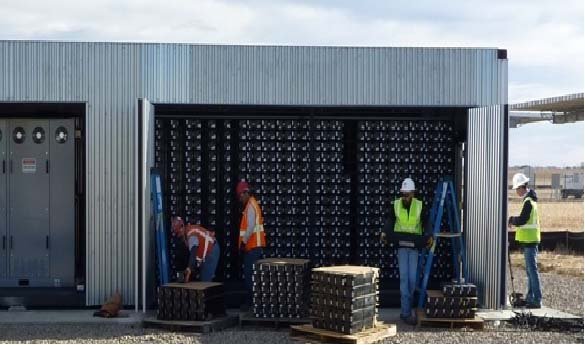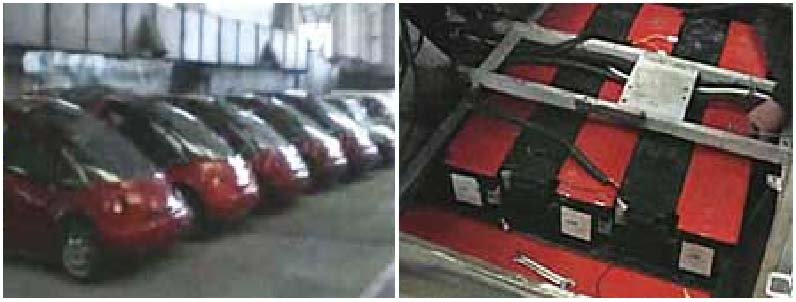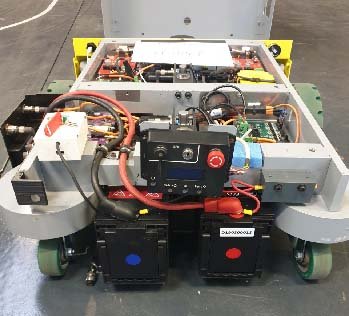Explore where a bipolar battery application makes the biggest difference—steep‑grade fleets, grid storage, buses, AGVs, UPS, marine and heavy trucks—using concise, verifiable results and practical notes you can trust.
Scenario: Mountainous Anji County has steep gradients. Trucks originally used flooded (water-topped) batteries that required frequent watering, risked acid spills and frame corrosion, delivered only ~10–12 months of life, lost climbing power after ~8 months, and charged slowly.
Bipolar battery application: Xupai horizontal bipolar batteries.
What improved
Why it matters: Lower total cost of ownership (TCO) and higher daily route efficiency.
Scenario: BSB Xianning factory installed a 1 MWh containerized energy storage system (commissioned in 2012) for peak-shaving, ramp smoothing, and pure-lead battery research.
Bipolar battery application: 12 V 100 Ah pure-lead modules in 48-series × 18-parallel (48S18P) matrix; BMS balances vertically while busbars equalize laterally.
What improved
Why it matters: Demonstrates grid-scale reliability with bipolar module architecture.
Scenario: Xtreme Power container unit for solar/wind integration.
System snapshot
Why it matters: Practical template for hybrid solar/wind + storage deployments.

Scenario: Low-speed electric mid-bus; curb weight 2.3 t, 4 passengers, ambient 10–20 °C.
Pack: 120 V / 200 Ah (10 in series, 2 parallel) from 12 V 100 Ah modules; VES smart charger.
Measured results
2C fast charge to ~90% in ~30 min.
Cruising speed: ~50 km/h with ~150 km tested range.
Why it matters: Bipolar battery application supports quick turnarounds and predictable service windows.
Scenario: Electric bus using 36 series strings of 12 V 100 Ah modules.
Bipolar advantages
Why it matters: Clean packaging and stable performance for platform electrification.
Scenario: Demonstration low-speed bus for the Olympics.
Pack: 32 in series, 3 in parallel (96 units total) of 12 V 100 Ah; flat, under-chassis installation.
Benefits
Scenario: Low-speed EV with a simple, space-saving pack.
Pack: 8 in series of 12 V 90 Ah; flat installation.
Benefits
Why it matters: Cost-effective entry route to electrify utility vehicles.

Location: BSB factory; ambient −5 to 35 °C.
Packs: 48 V / 100 Ah and 48 V / 200 Ah (TEV12-100, 1–2 strings), routinely 80–100% DoD with daily cycles.
Observed
Why it matters: Bipolar battery application holds voltage under load, improving climb and ride feel.
Scenario: AGV in factory logistics; ambient 15–30 °C.
Pack: 24 V / 100 Ah (TEV12-100).
Field results
Why it matters: Bipolar battery application boosts throughput in automated material handling.

Scenario: German lab test of high-current discharge for UPS-style backup.
Setup: TUS12-600W, 2 in series, ambient ~22.5 °C, 313 A discharge to 10.8 V per unit.
Results
Why it matters: Thermal stability is a hallmark bipolar advantage for safety-critical backup.
Scenario: Off-grid site near the Arctic; ambient mostly −10 to −20 °C (0 to −20 °C range).
Pack: ~24 V / ~1200 Ah built from multiple 12 V 120 Ah modules; operated primarily in PSoC 30–40% (partial state of charge), occasionally >80% DoD.
Observed
Why it matters: Bipolar battery application provides resilience where service visits are costly or impossible.
Location: Jiangsu.
Upgrade: Replaced 24 V / 105 Ah legacy set with 24 V / 70 Ah (TSS12-70).
Results
Why it matters: Bipolar architecture delivers high cranking amps and compact packaging for heavy equipment.
Use case: Marine starting + long-duration onboard backup.
Highlights
Why it matters: A single bipolar battery application can cover starting surges and house loads with fewer compromises.
Location: Fujian; heavy-duty trucking.
Highlights
Why it matters: Bipolar battery application reduces unplanned stops while supporting hotel loads and rapid turnarounds.
Tell us your target power/energy and site conditions. We’ll map your tariff, peaks, and AGC opportunity in a 20‑minute review.